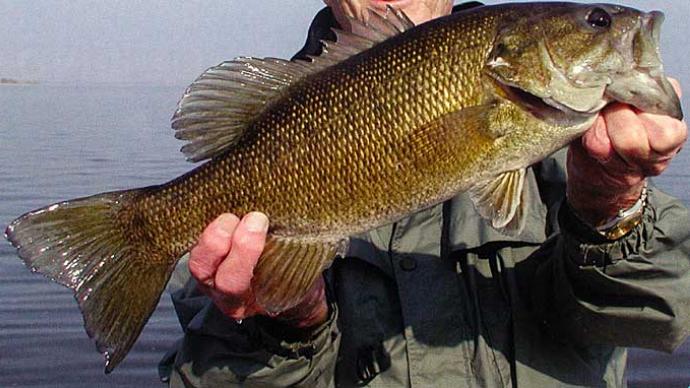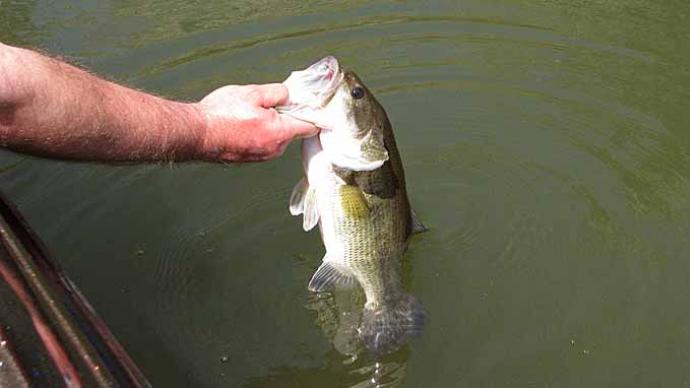
Fall is the prime fishing time, providing anglers with exciting action if they are versatile and can adjust quickly to the ever-changing feeding habits of largemouth bass.
Most know about the feeding frenzy that occurs every fall, yet some fail to make adjustments daily to meet changing conditions.
Granted, you can tie on a spinnerbait, buzzbait, crankbait, Carolina-rigged worm, or pig-and-jig and go fishing anywhere in the country this time of year. Those are good lure choices for reservoirs, rivers, or natural lakes. Lure choice, of course, is the easy part. Finding bass and knowing how to change your game plan throughout the day are keys to catching them consistently.
During fall, bass change their holding areas and feeding habits frequently. So, a successful day depends on how well you react. During the peak, fish are concerned more with eating and less about structure and habitat. They’re following baitfish; consequently, they may be drawn to areas where you’ve never before caught them.
That’s why I watch baitfish constantly. On a strange lake, I’ll look for seagulls, blue herons, kingfishers, and other waterfowl feeding on minnows. Much of this activity tells me bass are nearby.
There are three seasons within fall bass-fishing activity: early migration, peak fall, and post-fall.
The early migration begins when fish move from deep water to shallow flats. My preferred lure choice is a Carolina-rigged plastic worm. When I start catching fish in the shallow areas of a point, I know the migration has begun.
As summer fades, bass move from the main lake channels into larger creeks. While creeks hold fish year-round, the numbers rise during fall as fish make their move.
When this begins, I use deep-running crankbaits around stump-filled, intersecting creek channels. Should a tributary swing along a big flat, I’ll work the area more thoroughly. I may work the area more thoroughly. I may find fish holding on the creek ledge in the morning. By afternoon, they may have moved to the flats or farther in the backs of creeks to chase shad.
I’ve seen schools of big bass move to flats and run baitfish from one end to the other. This behavior can occur in open areas void of cover; it doesn’t seem to matter to bass as long as food is available. In these situations, a crankbait or a lipless rattling bait can fill a livewell quickly.
But be prepared to change your tactics instantly. To stay with fish in the fall, you must establish patterns within patterns.
Most know about catching bass in the backs of creeks during the peak feed. For this reason, the popular tributaries receive a lot of fishing pressure during the weekend.
You’ll find me searching the headwaters of the river channel, the source of the river. That end of the lake may not be productive in summer. Come fall, however, it attracts a healthy population of bass that doesn’t use the main lake. I’ll travel as far upriver as possible, looking for little pockets and cuts along the channel. That area is narrow and river-like, but small, quiet areas outside the current can hold a lot of bass.
Anytime I move upriver, I let the situation dictate lure choice. For example, current can be a factor; bass are attracted to it during fall, but prefer areas on the outside edges of current. Generally, these places are shallow. That’s when I’ll opt for a spinnerbait to place around fallen logs or brush. If the area holds dense cover, I’ll run a buzzbait over the top. If I find trees or stumps that create a little eddy, I’ll toss a pig-and-jig.
If baitfish are behind rock ledges and eddies, I’ll try a crankbait. The idea is to make a lure choice based on your ability to use it effectively where bass are suspected. If they’re aggressively pursuing bait, choose a lure that covers the area quickly, then return through it with a slower presentation.
As the water cools and winter approaches, flipping a pig-and-jig around heavy cover is the best technique for catching big bass.
More importantly, try to continue fishing through the season as long as possible. True, late fall weather can be unpredictable, but the action can be excellent.
If you follow bass from the time fall migration begins while remaining versatile and reacting to change, you’ll discover fall fishing is better than you ever imagined.
You can find more articles, quick tips, and more at HankParker.com.




